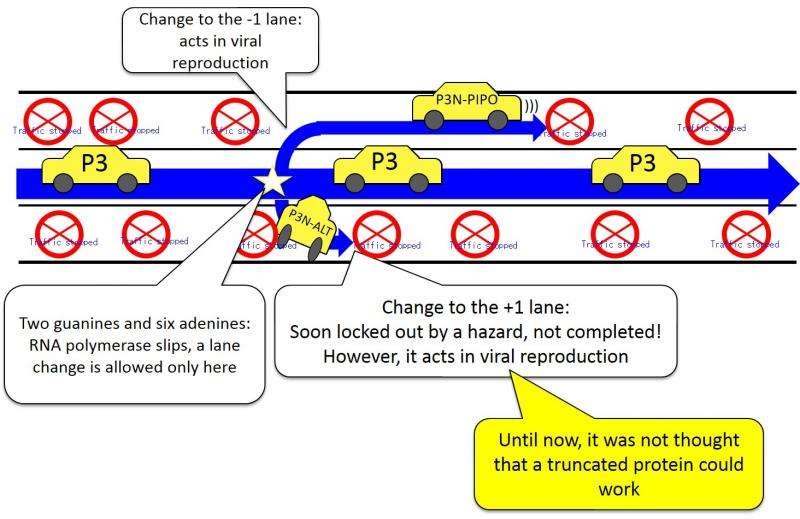Truncated yet functional protein is utilized by RNA viruses for their multiplication

Viruses that have RNA (ribonucleic acid) as their genome must pack the genes necessary for viral infection and reproduction into small genomes.
They use a variety of strategies to express them. When the clover yellow vein virus creates a copy of itself, it deletes one base from a sequence of two guanines and six adenines (G2A6) within the gene P3.
As a result, a truncated P3 gene (named P3N-ALT) is expressed, in which the portion of P3 downstream of the G2A6 is lost. Also, P3N-ALT is required for viral infection and reproduction.
These facts have been elucidated at this time by the research group composed of Researcher Yuka Komoda (Hagiwara), Instructor Kenji Nakahara, and Professor Satoshi Naito of Hokkaido University, and Specially-Appointed Assistant Professor Masanao Sato et al. of Keio University.
Many similar sequences for which a base is possible to be inserted or deleted have been found in the genomes of other plant and animal RNA viruses, so it is thought that truncated genes that are necessary for infection and reproduction may be expressed in other viruses as well.
Anticipated Outcomes:
Until now, it was not expected that a truncated gene like P3N-ALT would serve a function required for viral infection and reproduction. This research has demonstrated for the first time that the truncated gene P3N-ALT does work for viral infection and reproduction.
It is possible that many other RNA viruses also express truncated genes, and by considering this possibility in the research, we can expect new discoveries related to viral infection and reproduction, as well as pathogenicity.
More information: Yuka Hagiwara-Komoda et al. Truncated yet functional viral protein produced via RNA polymerase slippage implies underestimated coding capacity of RNA viruses, Scientific Reports (2016). DOI: 10.1038/srep21411
Journal information: Scientific Reports
Provided by Hokkaido University




















